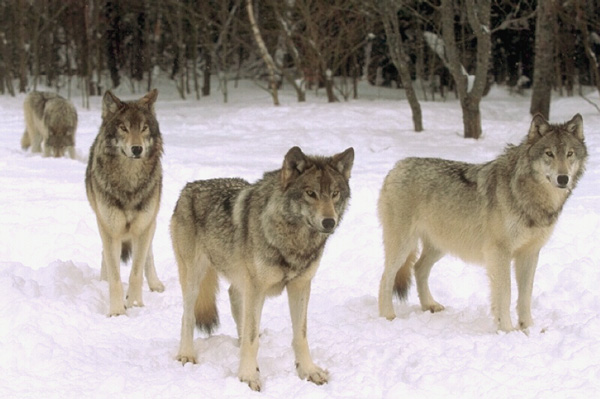
"As prey becomes more scarce in winter months wolf packs become more nomadic, often traveling up to 60 miles per day in their quest for food. Wolves are well adapted for traveling through deep snow with their long legs and large, wide paws that work like snowshoes on crusted snow.
During particularly deep snows, wolves travel in single file, allowing members toward the back of the line to save energy. They will also use trails created by other animals. During blizzards, wolves often curl their tails over their paws and nose and let the snow cover their bodies completely, thus providing insulation from the wind and cold.
Wolf fur consists of two layers-an overcoat of long, sleek hairs and a downy undercoat that is so thick that a human finger pressed into it cannot penetrate to the wolf's skin."
Copyright Daniel J. Cox

 |